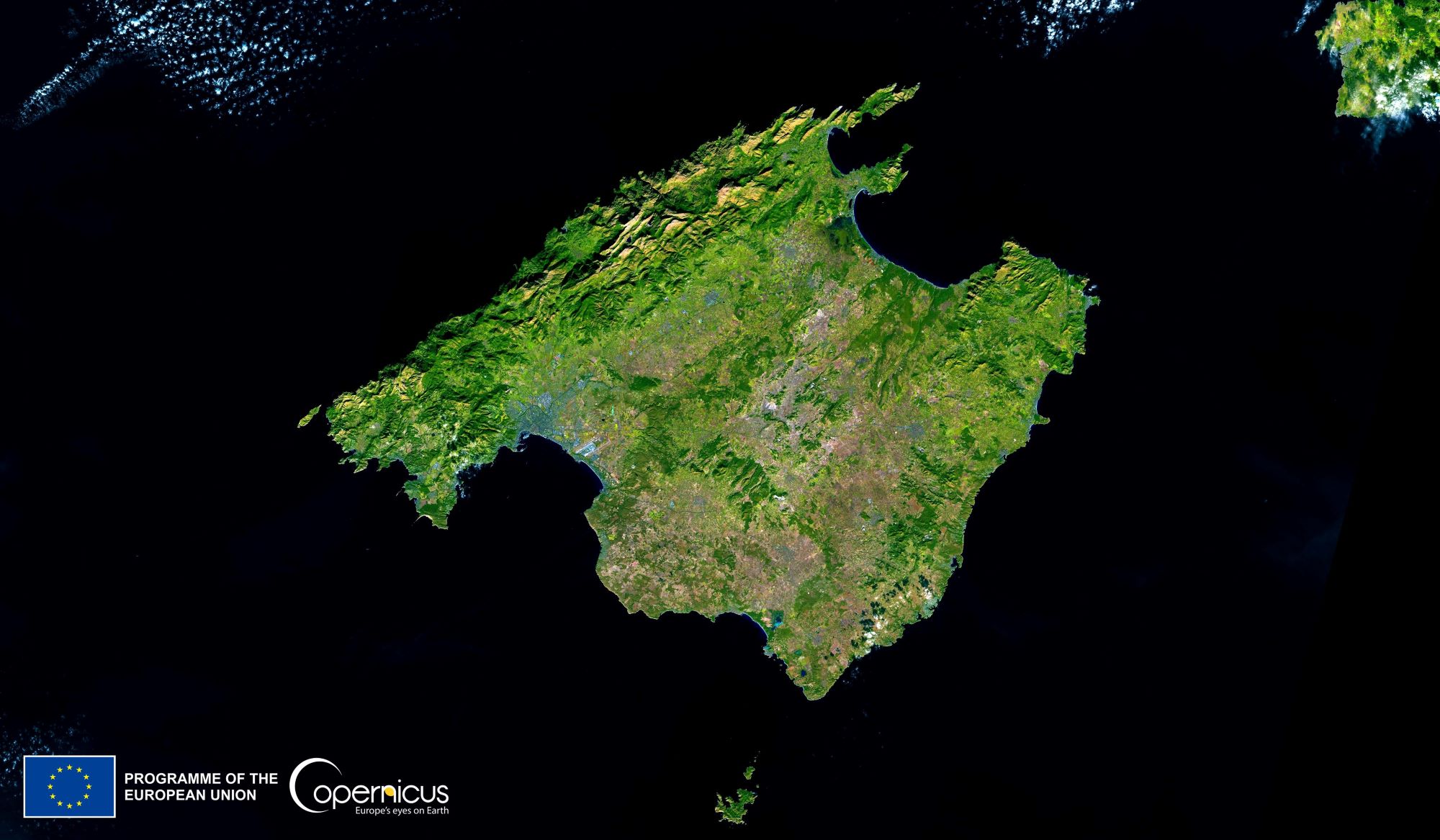ESA’s Copernicus Sentinel-2 captured Mallorca, Spain.

Mallorca (Majorca) is the largest island of the Balearic Islands, which are part of Spain, and the seventh largest island in the Mediterranean Sea. The capital of the island, Palma, is also the capital of the autonomous community of the Balearic Islands. The Balearic Islands have been an autonomous region of Spain since 1983. Mallorca has a Mediterranean climate (Köppen: Csa), with mild and relatively wet winters and hot, bright, dry summers. Summers are hot in the plains, and winters are mild, getting colder and wetter in the Tramuntana range, where brief episodes of snow during the winter are not unusual, especially in the Puig Major. The two wettest months in Mallorca are October and November. Storms and heavy rain are not uncommon during the autumn. Like the other Balearic Islands of Menorca, Ibiza, and Formentera, the island is an extremely popular holiday destination, particularly for tourists from the Netherlands, Germany, and the U.K.
The local scenery on the ground is as follows.

Reference: Copernicus EU’s Tweet
See earthview photo gallery: LiVEARTH